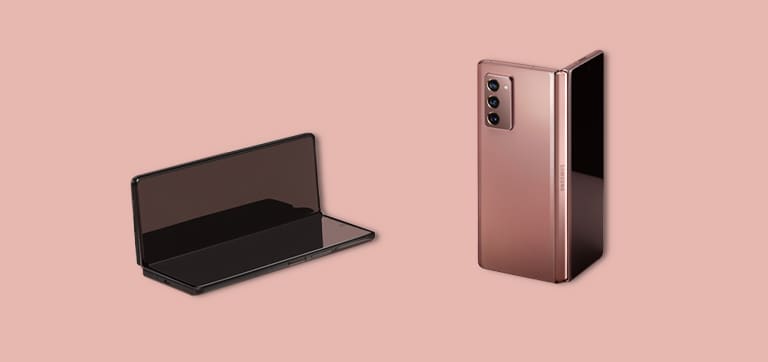
5 Interesting Developments In Smartphone Technology
Research indicates that many of us are holding onto our smartphones much longer than before, a record of 25.4 months. In 2017, smartphone sector growth reached negative numbers (-3.4%) for the first time in its history. The growing stagnation was due to a lack of innovation in smartphone technology. However, the recently concluded Mobile World Congress revealed some new, and interesting trends that could change the way smartphones are used. With all the buzz from the Congress dying down, we saw fit to take a look at the future to see where smartphones are going.
Here are five interesting developments in smartphone technology
Battery technology
Amidst all the hype about faster processors, more cameras and better graphics there has been one piece of tech yet to improve significantly: battery power.
Smartphone technology has not seen significant improvements in battery capability, which is a problem when you consider that the latest smartphones require a lot of power to work. Fortunately, plenty of companies are looking to address this problem by providing new charging methods. We all know about Qi Wireless charging, but how about charging your smartphone via air?
Energous, Ossia and Wi-Charge are developing technologies that can project power through the air using radio frequency and infrared red light. Charging through the air may not be as fast as plugging in your phone, but it’s offset by constantly charging without the need to plug in your phone.
Camera
Unless you have been living under a rock, you would have heard about the new camera system for the Samsung S10. We are calling it a camera system, as opposed to a camera because the Samsung S10 has five cameras working in unison, all with impressive technical specs. A 16MP ultra-wide camera, 12MP Telephoto camera, 12MP wide-lens, 10MP selfie camera and 8MP RGB camera. All very impressive specs that deliver some truly sublime images.
So, what does it all mean? Well, it means you can become the next Steve McCurry or at least somewhere close to his skill level. In our experience, every picture taken with the Samsung S10 has come out crisp and detailed, in both dark and light conditions, thanks to the dual aperture lens. It’s a bit of a relief not having to worry about the lighting can affect the clarity of your selfie (unless you are a professional photographer aspiring to become the next Steven McCurry). Then there is the wide-angle camera lens. Its biggest contributing factor is its ability to incorporate more background into your image. It’s a spectacular feature to be sure, but we suspect that its use will depend on the talent of the person working the camera.
Overall, the Samsung S10 has a spectacular camera system, one that will deliver, crisp, sharp images and videos in both light and dark conditions. If you have an Instagram account, a Youtube account, or someone who simply loves photography, then, you are going to love the Samsung S10.
Improving security
Smartphone manufacturers are looking for several ways to improve security without disrupting the fun factor of using a smartphone. To this end, we will see several changes to smartphone technology to accommodate these dual needs. A great example is the on-screen fingerprint sensor, designed to meet the dual needs of an inch-to-inch display and tight security.
Onscreen sensors were made possible by manufacturers like Synaptics, who found a way to capture images of a finger in between the pixels. We expect biometric security to be the new standard in security complemented by other features like wireless tokens and two-factor authentication.
Wireless tokens powered by NFC technology will create a more secure device – something which will be important when we use our devices for cloud computing. One selling point of wireless tokens is its capacity to ‘borrow another smartphone while keeping it completely secure.
Augmented reality and glasses
Apple recently filed for a patent on glasses technology, while Apple CEO Tim Cook claimed that augmented reality is the future. So, what does this mean for the future of smartphone technology? It means that, very soon, we could be spending a lot of time interacting with our smartphones through AR/VR glasses, instead of looking down at the screen.
Some of the high-end smartphones from Samsung already have augmented reality capability, but what’s new is the prospect of watching movies, taking photos and writing texts through our virtual reality glasses. We still have some way to go before the technology can go mainstream and there are also some social issues to answer like if you’re taking a picture of someone using glasses, should they be informed about it? Still, the sky is the limit.
Change in design
As smartphone technology constantly evolves, it should come as no surprise that the design and the way we use smartphones will change, like the phasing out of physical ports. Wireless charging and faster Wi-Fi reduce the user’s reliance on USB ports to transfer information. When we stop using physical ports, manufacturers will not hesitate to get rid of USB ports.
The removal of these ports will change the design. Without the need for ports, manufacturers can create smartphones that are more damage resistant and less costly to manufacture. Smartphone manufacturers have demonstrated that they will not hesitate to get rid of features they believe obsolete. Remember when Apple got rid of the headphone jack for the iPhone 7?
Increased reliance on cloud processing
Smartphone technology has been wowing us for years with their hardware specs, but we suspect there will be less emphasis on high-end processors and graphics in the years to come. The reason? Better Wi-Fi connectivity, the rise of 5G and the way people use their phones will see a shift from hardware to online. After all, many users still see their smartphones as a communication device, instead of a gaming device. A 2017 study revealed that most smartphone owners use their phone for texting, emailing, and shopping online.
In other words, we use smartphones for connecting with others. Hence, most smartphone owners don’t need better graphics processors. They only need better connectivity and faster Wi-Fi.
The relationship between smartphones and cloud computing is changing as more people use their smartphone to connect online. According to a study, 3.7 billion people will be accessing the internet through their mobile devices only. The resultant shifts will see a heavy reliance on cloud computing with most of the processing legwork taking place over the cloud, while the apps remain as a virtual interface on the device. Thus, smartphone technology will see a heavy emphasis on cloud computing.
Key takeaways
Smartphone technology is constantly changing, as smartphone manufacturers look to bring new ideas to the market. The technological developments are exciting because they are building on the way we already use our smartphones, while some innovations on the horizon could change the way we use smartphones altogether.
Looking for in-depth reviews and tips for using smartphone technology? Visit the Boxedtech blog for everything you need.


